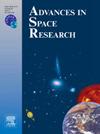Comprehensive landslide hazard assessment using spatial, temporal and size probabilities combined with landslide density analysis in Çanakkale (NW Türkiye)
IF 2.8
3区 地球科学
Q2 ASTRONOMY & ASTROPHYSICS
引用次数: 0
Abstract
To assess the landslide hazard (LH) of the area between Lapseki and Güzelyalı (Çanakkale, NW Türkiye) the LH map and the landslide density hazard map were produced. The LH maps produced in this study were calculated by multiplying the spatial probability, size probability, and temporal probability. The landslide susceptibility (LS) map was produced using the Random Forest method. While producing the LS map, elevation, land use, curvature, lithology, NDVI, distance to streams, slope, TWI, and aspect were used as input parameters. The rainfall triggering landslides was obtained as 220 mm. Using Gumbel distribution, the exceedance probability of the 220 mm rainfall value in 5, 10, 25, and 50 years were calculated as 0.453, 0.701, 0.951, and 0.997, respectively. The probability of occurrence of a landslide that is equal to or greater than a selected area was found using landslide frequency-area distribution. The probability of a landslide in the study area, surpassing an area of 0.1 km2, an area of 0,35 km2, and an area of 1 km2, with corresponding probabilities of 0.701, 0,361, and 0.184, respectively. To solve questions about where and how densely potential landslides will occur at a given time, a landslide density hazard map was produced. The Landslide density hazard map was calculated from the spatial probability, landslide density, and temporal probability. It was seen in this study that the landslide hazard concept should be considered by the decision makers for the future works such as land-use management and urban development strategies.
基于空间、时间和大小概率结合滑坡密度分析的Çanakkale (NW t rkiye)滑坡危险性综合评价
为评价拉普塞基与g zelyalyi (Çanakkale, NW t rkiye)之间地区的滑坡危险性(LH),绘制了LH图和滑坡密度危险性图。本研究生成的LH图是通过将空间概率、大小概率和时间概率相乘来计算的。采用随机森林法绘制滑坡易感性图。在制作LS地图时,将高程、土地利用、曲率、岩性、NDVI、与河流的距离、坡度、TWI和坡向作为输入参数。引发滑坡的降雨量为220毫米。利用Gumbel分布,计算出5年、10年、25年和50年220 mm降水值的超过概率分别为0.453、0.701、0.951和0.997。利用滑坡频率-区域分布,求出滑坡发生的概率等于或大于某一选定区域。研究区发生滑坡的概率分别超过0.1 km2、0.35 km2和1 km2,对应概率分别为0.701、0.361和0.184。为了解决在特定时间可能发生滑坡的地点和密度的问题,制作了滑坡密度危险图。根据空间概率、滑坡密度和时间概率计算滑坡密度危害图。研究结果表明,决策者在未来的土地利用管理和城市发展战略等工作中应考虑到滑坡危害的概念。
本文章由计算机程序翻译,如有差异,请以英文原文为准。
求助全文
约1分钟内获得全文
求助全文
来源期刊

Advances in Space Research
地学天文-地球科学综合
CiteScore
5.20
自引率
11.50%
发文量
800
审稿时长
5.8 months
期刊介绍:
The COSPAR publication Advances in Space Research (ASR) is an open journal covering all areas of space research including: space studies of the Earth''s surface, meteorology, climate, the Earth-Moon system, planets and small bodies of the solar system, upper atmospheres, ionospheres and magnetospheres of the Earth and planets including reference atmospheres, space plasmas in the solar system, astrophysics from space, materials sciences in space, fundamental physics in space, space debris, space weather, Earth observations of space phenomena, etc.
NB: Please note that manuscripts related to life sciences as related to space are no more accepted for submission to Advances in Space Research. Such manuscripts should now be submitted to the new COSPAR Journal Life Sciences in Space Research (LSSR).
All submissions are reviewed by two scientists in the field. COSPAR is an interdisciplinary scientific organization concerned with the progress of space research on an international scale. Operating under the rules of ICSU, COSPAR ignores political considerations and considers all questions solely from the scientific viewpoint.
 求助内容:
求助内容: 应助结果提醒方式:
应助结果提醒方式:


